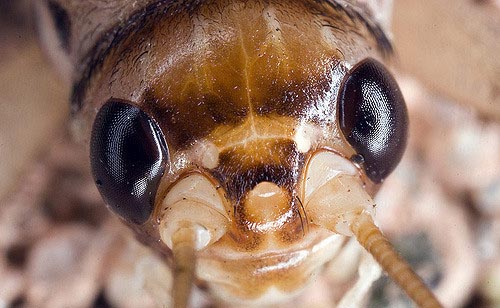It was back in ’09.
A virus swept through North America, wiping out over half of the commercial cricket farms in existence in just the first blow, killing hundreds of millions of crickets.
It was a dark time.
I remember Bob Eldred of Top Hat Cricket Farm told me over the phone “I’d give anything for a tub of eggs right now.” Just the sound of his voice broke my heart.
Standing amidst the ruins of a thousand commercial cricket farming dreams, seeing the devastation heaped upon my fellow cricket farmers in the form of truckloads of dead crickets, hearing their plight, my heart and spirit aching in solidarity with theirs, I decided I had to do something.It was a Cricketpocalypse.
I spoke with the great entomologists of our time. Very few knew much about crickets, even fewer knew about the virus or what to do. My friend, Dr. David Weissman, in the entomology department at the California Academy of Sciences in San Francisco, is probably the most knowledgeable entomologist in the world regarding the Cricket Virus of ’09.
“It would literally take a nuclear blast to kill that virus,” he said to me back in 2010, chuckling, not in a happy way, but with more of a forlorn undercurrent. In those days, it seemed evident that the acheta domesticus would be forever wiped out in North America as a commercial species.
As in Europe the decade previous, now here.
Though not personally having experienced the virus on my own farm, it seemed to me to be just a matter of time, given what had happened in Europe, and also what the entomologists involved had to say on the matter. I voluntarily gave up farming acheta domesticus commercially, and took over my own personal crusade to try and either save the species, develop a virus-resistant hybrid, or help bring in a new species to farm commercially.
But that is another story. A long one.
Fast forward to 2017. I email my friend Dr. Scott Sakaluk, Distinguished Professor of Entomology at Illinois State University. I’ve used him as a sounding board for years. I do a lot of research, and he has done more scholarly articles on crickets than anyone on the planet.
I have read them all.
My email is simple. I tell Dr. Sakaluk about how it seems that are a number of cricket farms, albeit smaller ones, sprouting up around the country…and they are farming acheta domesticus!
Well, not all farms got wiped out in the great virus of ’09, contrary to what we thought might happen, some commercial acheta domesticus colonies survived the Cricketpocalypse.
So, I tell Dr. Sakaluk about this little resurgence of acheta farms popping up here and there, still having visions of what happened to some of the old school pet food cricket farmers back in ’09, and also what some of what happened to a few of what I call this “New Wave of Millenial Farmers”, like Kevin Bachhuber over at Big Cricket Farms. A few years ago, he started a post-virus, large commercial cricket farm dedicated to raising crickets for human consumption (America’s first of that kind), and his entire stock of acheta domesticus crickets fell victim to the dastardly plague.
Of course, there are some large commercial cricket farms that still farm achetas. Some of these farms survived the plague by microwaving their mail, putting the eggs under UV lights, utilizing foot baths, and spraying themselves with Lysol (true story, eh Armstrong Crickets?), and all kinds of other things in an effort to stave off the virus. Not sure how many of those precautions would help against a virus that requires a nuclear detonation, but they were taken nonetheless, and some of these farms still have achetas to this day. However, one farmer told me that it’s a little like living under the Sword of Damocles.
Go ahead and Google it, I’ll wait.
I asked Dr. Sakaluk about the virus and farming achetas today, 8 years later. He basically said that if the area where the crickets are farmed is virus-free, and they came from a virus-free stock, then there is no reason to suppose that the virus would infect the farm anytime soon.
Anytime soon?
There’s that darned sword again.
Sword of Damocles or no, The Cricket Man has decided to run an experiment that he is going to share with you over time as it unfolds.
I have been farming gryllodes sigillatus since 2013. I was the 2nd person in the country to get a permit from the USDA to do so. While everyone else was farming gryllus assimilis (which failed miserably here in the states), because that was the cricket the USDA had approved to replace the acheta domesticus, I was farming g.sig or as I like to call them “Banded” crickets because there were two states that would not allow gryllus assimilis in, Missouri and…yep, my state: Oregon.
That’s how I started farming g.sig so early here in North America.
However, with the release of that oft-cited 2013 UN FAO report, my focus shifted from producing crickets for pet food, to producing crickets for people food. However, my commercial farming has scaled back over the last two years, as I began preparing for this whole Cricket Man adventure teaching others how to farm crickets.
I’m always running experiments and testing my own prototype equipment, and so I keep a small colony of about 100,000 or so crickets on hand all the time in my farm/lab.
Given what I have been observing over the last few years, and my conversations with Drs. Weissman and Sakaluk, I have decided to go ahead and bring in some achetas to my micro farm lab and see how they do.
There is no cricket as beautiful as a female acheta domesticus during the first hour that she emerges from her final instar, her long wings and beautiful body completely white. She looks like an insect from another world. It is an awesome sight. I’ve missed that.
I can’t wait to see it again.
I’ll get you some pictures when it happens.
So, although they aren’t actually coming back from the dead as zombie crickets…achetas are coming back to The Cricket Man’s farm as Cricketpocalypse survivors.
No commercial worries, this is pure experiment. I cut my teeth on achetas. Learned most of what I know about cricket farming from achetas.
Now they’re coming home…I’ll keep you posted.
~Cricket Man















